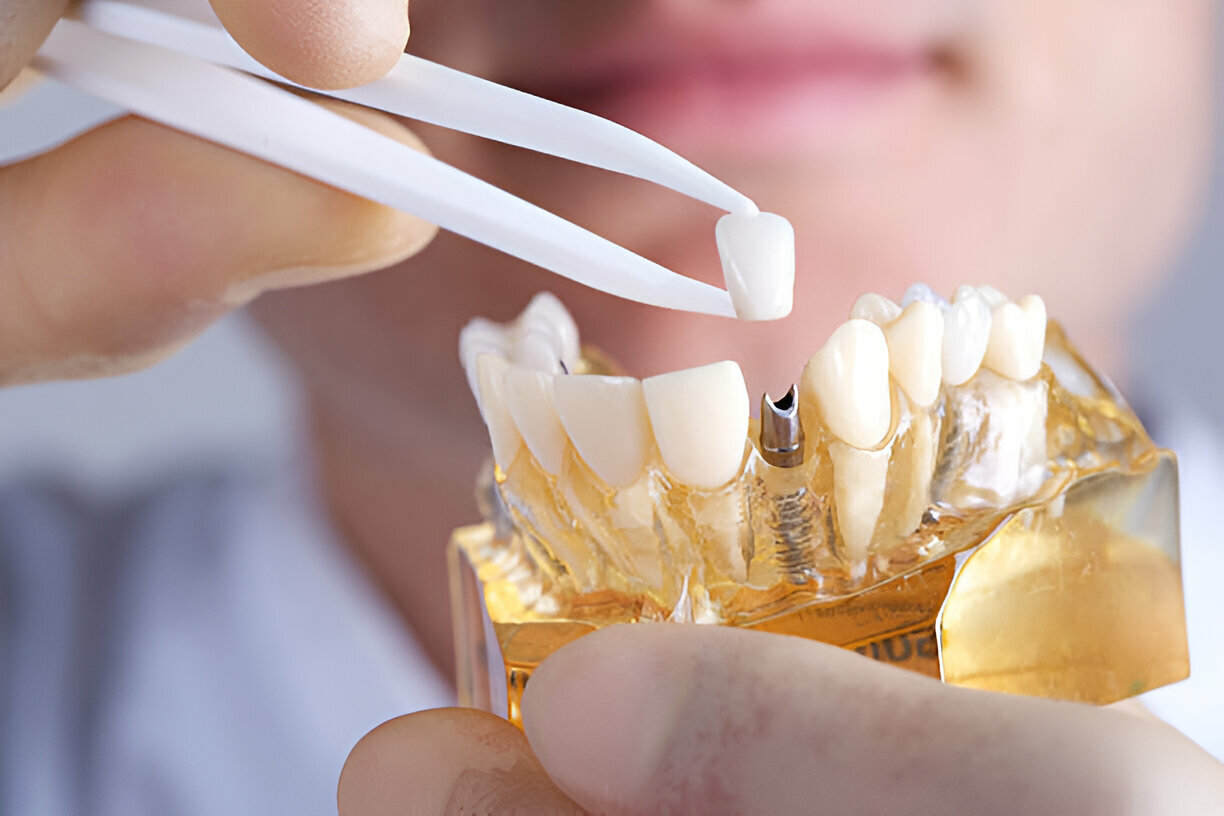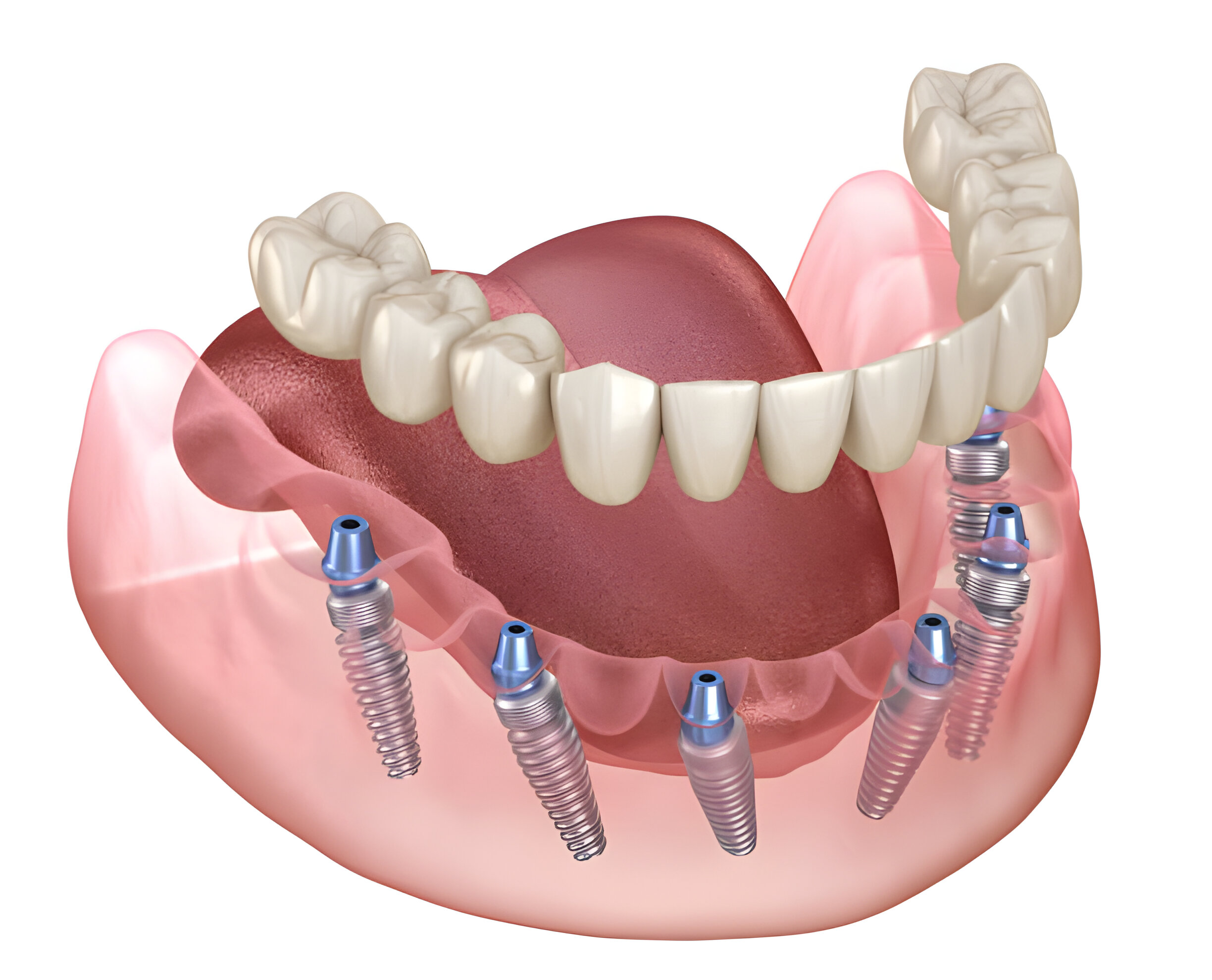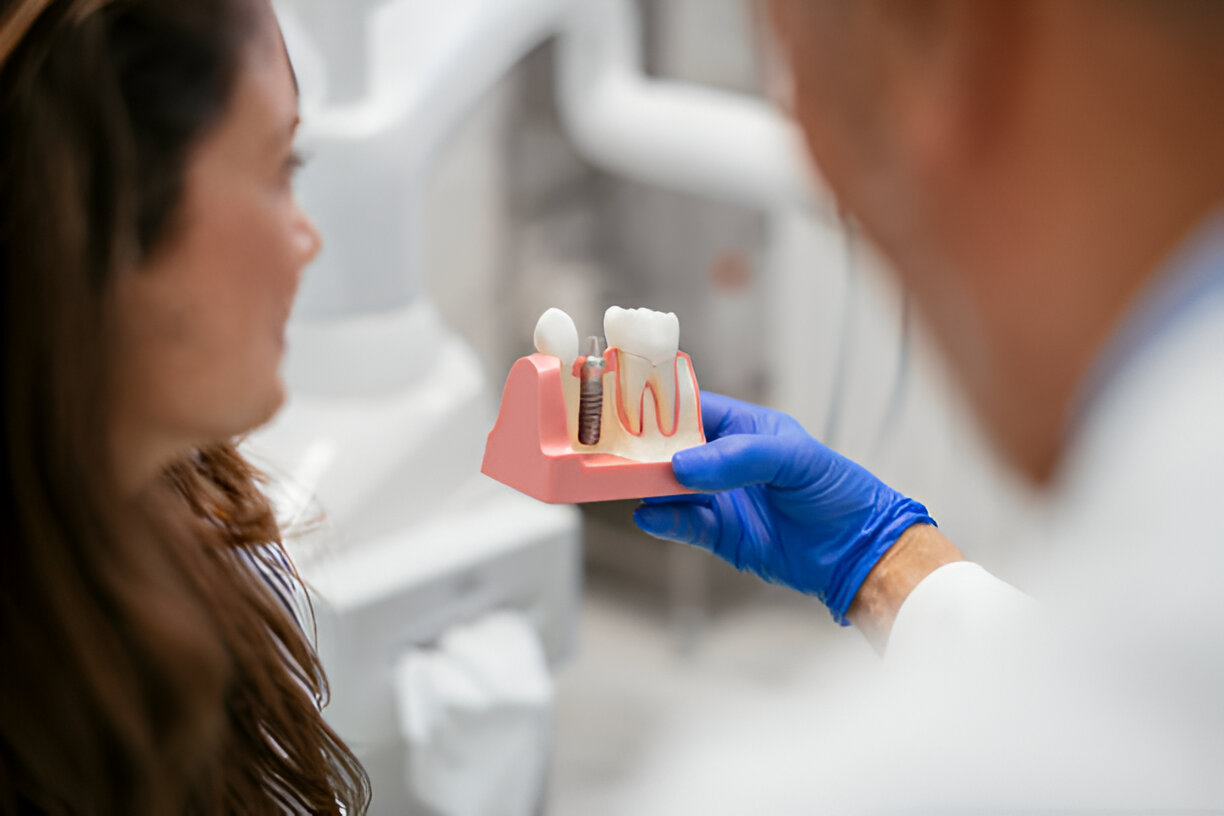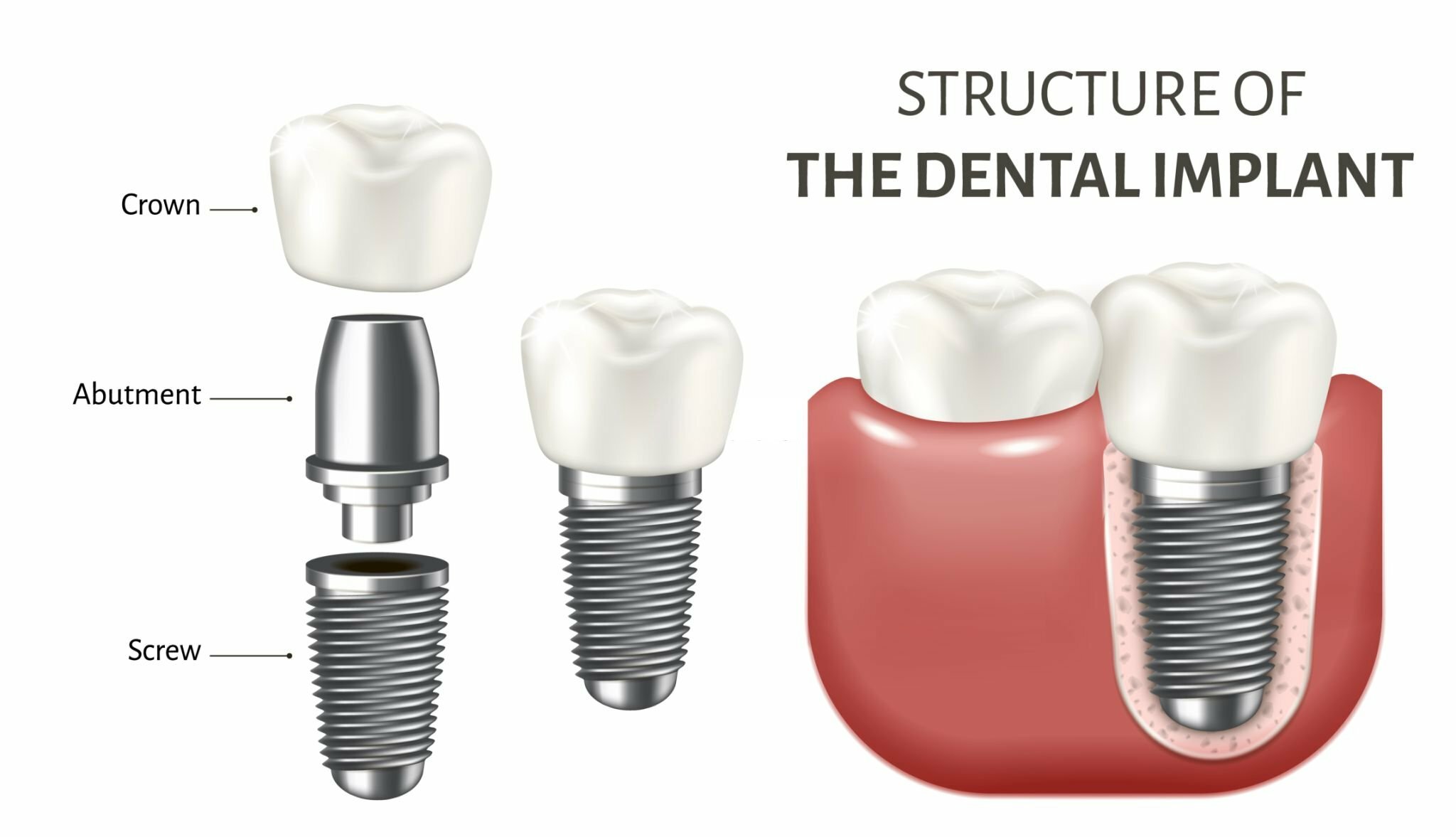Summary
Having missing teeth can affect much more than just your appearance. In fact, they can undermine your confidence, speech, and your ability to enjoy your meals.
But fortunately, dental implants are now among the most reliable and modern solutions for anyone who wants to replace missing teeth, restoring function and achieving a beautiful, natural-looking smile.
The durability of dental implants makes them a top choice among patients seeking lasting results.
Patients at Sundance Smile in Gallup, NM, receive expert care supported by advanced implant technologies. In this article, we will cover:
- Understanding Dental Implants
- Why Choose Dental Implants?
- The Dental Implant Procedure at Sundance Smile
Continue reading as we learn more about dental implants in the following sections.
Understanding Dental Implants
Dental implants offer a lasting and natural-looking replacement when you are missing one or more teeth. In recent years, implants have grown increasingly popular, with studies showing success rates of over 95% when placed by skilled professionals.
These implants are usually made of titanium or zirconia and act as artificial tooth roots. These are surgically laced into your jawbone by your trusted dentist in Gallup, NM.
Structure of a Dental Implant:
- Implant Post: Serves as the root, integrating with the jawbone for stability.
- Abutment: Connects the post to the crown.
- Crown: The visible part that looks and functions like a real tooth.
Osseointegration is the process by which an implant fuses with bone. This provides strong support and also feels just like your natural teeth when eating or speaking. Implants stand independently, offering unmatched comfort, function, and longevity, unlike dentures, which can slip, or bridges, which rely on neighbouring teeth for support.
Getting dental implants not only helps restore the appearance of your smile but also preserves bone health and facial structure. This makes them among the most advanced solutions for permanent tooth replacement.
Why Choose Dental Implants?
Dental implants are among the most reliable and long-lasting solutions for tooth replacement. They are designed to look, function, and feel like real teeth and also help to restore not only your smile but also your confidence.
Long-Term Benefits of Implants:
- Durability & Stability: Implants are made from biocompatible titanium that fuses with the jawbone. This helps them to provide a secure foundation that can last for decades with proper care.
- Natural Appearance: Each crown is custom-shaded to match your surrounding teeth, ensuring a seamless, lifelike smile.
- Bone Preservation: Implants stimulate the jawbone and prevent bone loss, unlike dentures or bridges. This helps them to maintain your natural facial shape over time.
- Improved Function: They enhance your ability to chew comfortably and speak clearly without worrying about slipping or discomfort.
Dental implants significantly improve your oral health and overall quality of life, beyond serving solely aesthetic purposes. This also allows you to smile, eat, and live your life confidently again.
The Dental Implant Procedure at Sundance Smile
Sometimes, getting a dental implant might sound complex, but the process at Sundance Smile is made smooth, comfortable, and personalised every step of the way. Here is what you can expect from the procedure:
1. Initial Consultation
Your journey for dental implants starts with a comprehensive exam and digital X-rays that assess bone health and oral condition. The dentist creates a customized treatment plan using advanced 3D imaging to ensure precise implant placement and natural-looking results.
2. Implant Placement
A small titanium post is placed during a minimally invasive procedure into your jawbone. Most patients experience little to no discomfort, all thanks to the modern sedation options that are available now, such as local anesthesia or conscious sedation.
3. Healing and Integration
Once the healing process is complete, your jawbone naturally fuses with the implant in a process called osseointegration. This helps to create a stable foundation for your new tooth.
4. Abutment and Crown Placement
A counter, also known as an abutment, is attached to the implant once the healing process is complete. This restores both the function and appearance.
Every stage of your implant treatment is guided by cutting-edge technology and compassionate care. With minimal discomfort and maximum precision, it ensures a confident, lasting smile.
Ideal Candidates for Dental Implants
Who Qualifies
For individuals with one or more missing teeth, dental implants are an excellent option to maintain good oral hygiene and healthy gums. To support the implant securely, candidates should also possess sufficient jawbone density.
When Additional Treatments May Be Needed
A bone grafting procedure or other preparatory treatment is recommended and carried out if a patient has experienced bone loss due to gum disease or prolonged tooth loss. This creates a strong foundation for the implant.
Professional Evaluation Matters
Dentists know that every smile is unique, so determining candidacy requires a personalised assessment. At Sundance Smile, scheduling a consultation for dental implants in Gallup, NM. This is where advanced imaging and expert evaluation help you to discover the best tooth replacement option for your needs.
Caring for Your Dental Implants
To keep your dental implants strong, functional, and long-lasting, proper care is key. Your implants can last for decades with the right daily habits and regular professional care, and sometimes even a lifetime.
Daily Home Care
Implants need consistent cleaning just like your natural teeth do. You should brush twice a day using a soft-bristled toothbrush and non-abrasive toothpaste. To prevent inflammation or infection in your mouth, you should floss daily to remove plaque around the implant and gum line.
Routine Dental Visits
Every six months, schedule your professional checkups and cleanings. These regular visits allow your dentist to check the stability of your implants and also ensure your surrounding gums stay healthy.
Avoid Harmful Habits
Try to avoid chewing on complex objects like ice, smoking, or even putting excessive pressure on your implants. Doing so can weaken the bone support over time.
Sundance Smile – Your Go-to Clinic for Dental Implants in Gallup, NM
Dental implant patients at Sundance Smile in Gallup, NM, receive expert care from highly trained implant specialists who combine years of experience with advanced dental technologies such as guided implant placement and 3D imaging.
Whether you are replacing one tooth at a time or multiple teeth, each treatment is tailored to your unique needs.
Conclusion
Implants are a great way to get a complete, natural-looking smile once you’ve lost your teeth. Given the several options available, it’s the best option for individuals looking to perfect their smile after tooth loss.
Remember, when undergoing an oral treatment, it’s best to connect with professionals in your vicinity. For instance, the experts at Sundance Smile help individuals achieve a seamless smile with implant placement.
Takeaway
- Dental implants offer a permanent, natural-looking solution for missing teeth, helping you restore full function and confidence in your smile.
- To prevent inflammation or infection in your mouth, you should floss daily to remove plaque around the implant and gum line.
- With proper care and regular checkups, dental implants can last for decades, making them one of the most reliable long-term tooth-replacement options.








